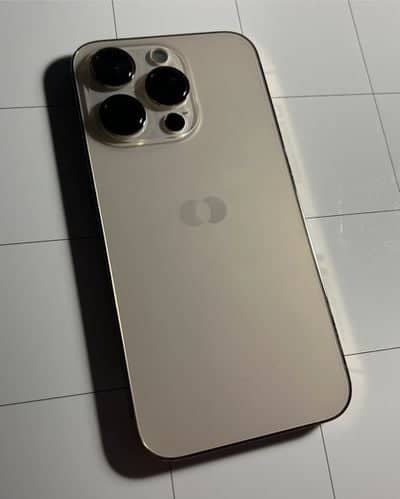Julie Clover
Apple uses a lot of test devices and prototypes when reviewing new iPhone features, and one such test device was recently discovered by AppleDemoYT, who shared the video today. This rare iPhone prototype originally came from a facility that recycles electronics.
“Vesica Piscis” iPhone is unique in that it does not feature the Apple logo, but instead features a symbol that looks like two crescent moons. This symbol has appeared on prototypes of Apple devices before, most notably on an early version of the AirTag. The shape Apple uses is a mathematical figure formed by the intersection of two disks of equal radius, called vesica piscis in Latin. It is a symbol that has influenced everything from architecture to art.
It appears to use components from the iPhone 13 Pro and iPhone 14 Pro, though it also has parts that don't belong to either of those iPhones. There are volume and power buttons that don't click when pressed. Apple was reportedly working on buttons with haptic feedback for the iPhone 15, but the feature never made it.

There's a single volume button instead of separate buttons, and a modified SIM tray that's shorter than usual and secured with screws. The engraving on the side of the volume button suggests that the device was a “Ranger” prototype and was used for field testing.
Some internal components, like the camera, are non-functional and appear to be placeholders, and there are minimal internal cables connected to the logic board. One cable connects to the charging port, and another to the buttons on the device. The logic board itself has a unique layout that appears to be a cross between the iPhone 13 Pro and iPhone 14 Pro.
When turned on, the iPhone displays a message stating that the microcontroller has completed initializing, and when connected to a Mac, it is labeled “Bender,” which appears to be a reference to Futurama. It doesn't respond to input.
Based on the serial number, the device was manufactured in May 2021, which predates the release of the iPhone 13 Pro. However, it doesn't appear to be an iPhone 13 Pro prototype, as the iPhone 13 Pro would have been finalized by now. The camera bump is similar to the iPhone 14 Pro, so it could be the 14 Pro, but the combination of components makes it difficult to identify.
AppleDemoYT suggests this is a test device for experimental features, rather than a prototype for a specific iPhone model, and it may have been designed to test haptic button technology.
Regardless of what it was used for, the Frankenstein iPhone provides an interesting look at some of the testing Apple does when considering new features.
[ 40 comments ]










